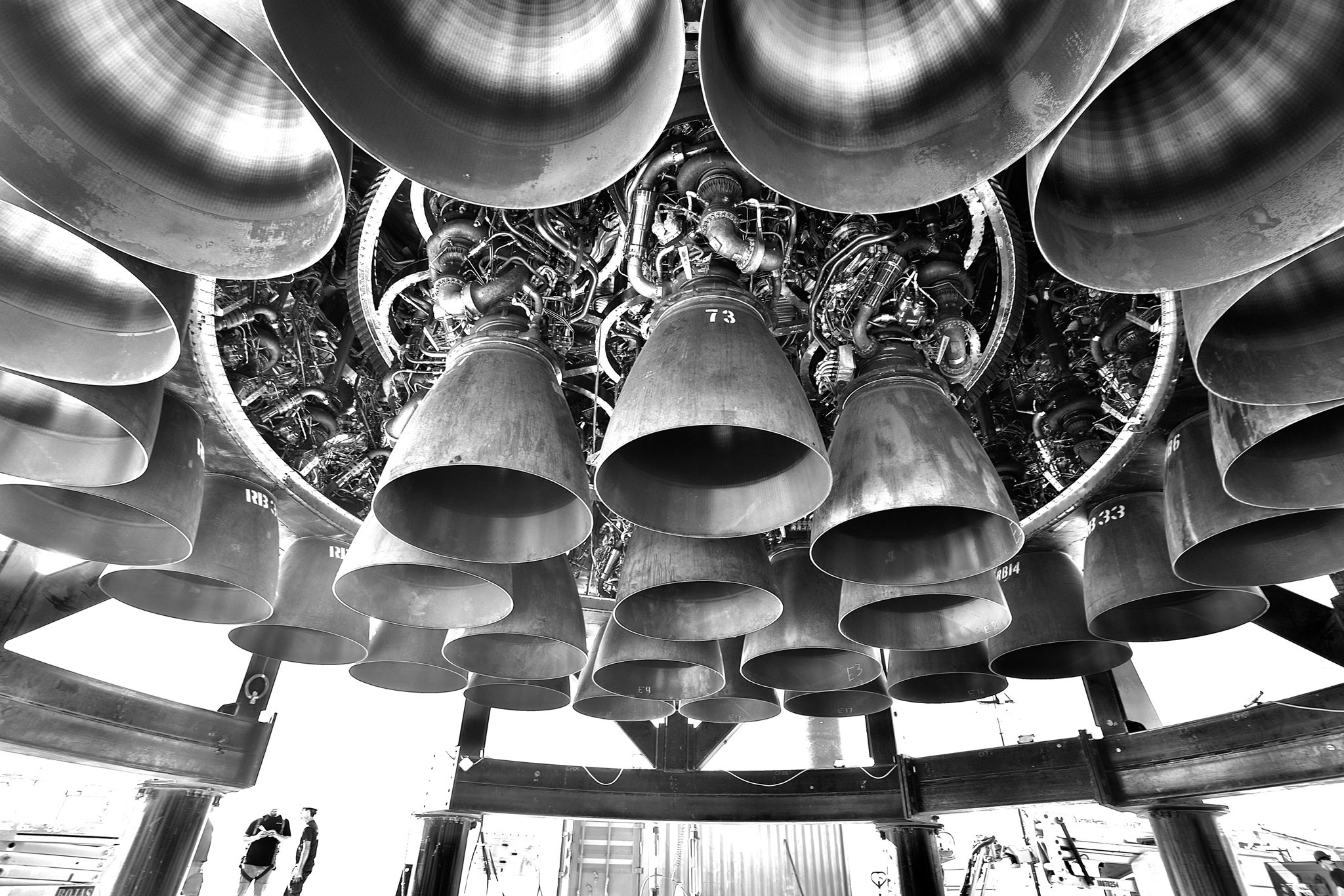
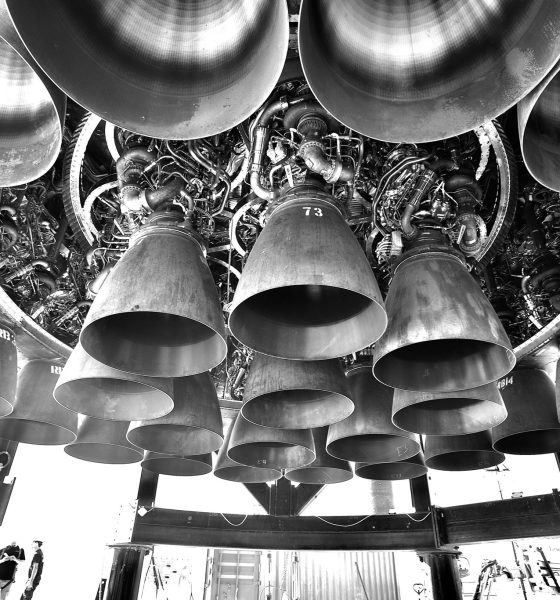
News
SpaceX’s first two Super Heavy boosters making good progress towards test debuts
SpaceX is making good progress on Starship’s first two Super Heavy boosters, both of which could potentially be ready for their first major test campaigns before the end of the year.
On November 19th, some ten weeks after the process began, SpaceX craned Super Heavy B5’s methane (LCH4) tank on top of its oxygen (LOx) tank, marking the end of major structural assembly for the 69m (~225′) tall booster. A team of welders has since been working around the clock to weld the two tanks together and complete a transfer tube that routes methane propellant down through B5’s oxygen tank.
Two days prior, CEO Elon Musk shared a photo of SpaceX’s other Super Heavy booster (B4) which has been slowly progressing towards test readiness for more than three months. It’s unclear why SpaceX has been so sluggish to prepare Super Heavy B4 for testing but with B5 finally approaching the finish line, the company will soon find itself in a position where it will need to decide which booster to proceed with towards the program’s near-term end goal: the first orbital Starship test flight.
Once Booster 5’s two halves are welded together, only a few things will set it and Booster 4 apart. In recent weeks, SpaceX’s slow progress on Super Heavy B4 relented a bit as technicians began closing out the booster’s raceway (a conduit for plumbing, wiring, and avionics) with basic covers. More importantly, SpaceX also began reinstalling Raptor engines and installing heat shielding around those engines for the first time. In the photo Musk published on November 17th, that heat shield is easily visible and there are signs that it will ultimately enclose the entire outer ring of 20 Raptor Boost engines above their nozzles.
Once complete, that shield will theoretically protect each engine’s nest of sensitive plumbing and wiring during static fires; ascent, boostback, and landing burns; and – most importantly – reentry. Unlike Falcon boosters, which always perform a ~30-second, three-engine ‘reentry burn’ to slow down and cushion the blow of reentry heating, SpaceX plans to recover steel Super Heavy boosters without reentry burns. In theory, that should making booster recovery more efficient, allowing another dozen or so tons of propellant to go towards sending Starship to orbit instead of landing.
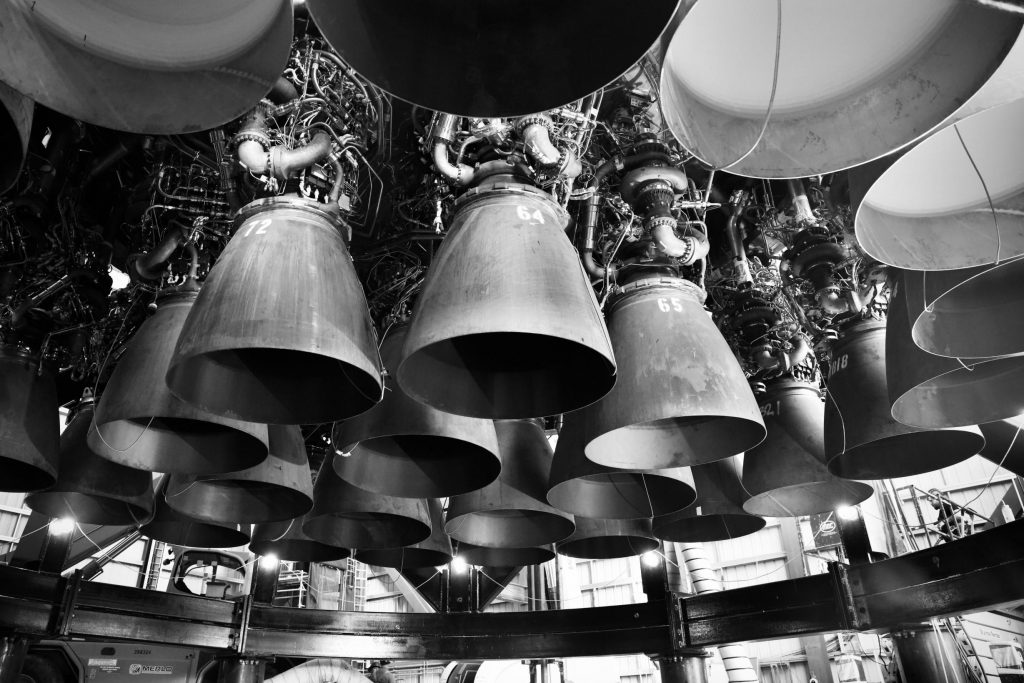
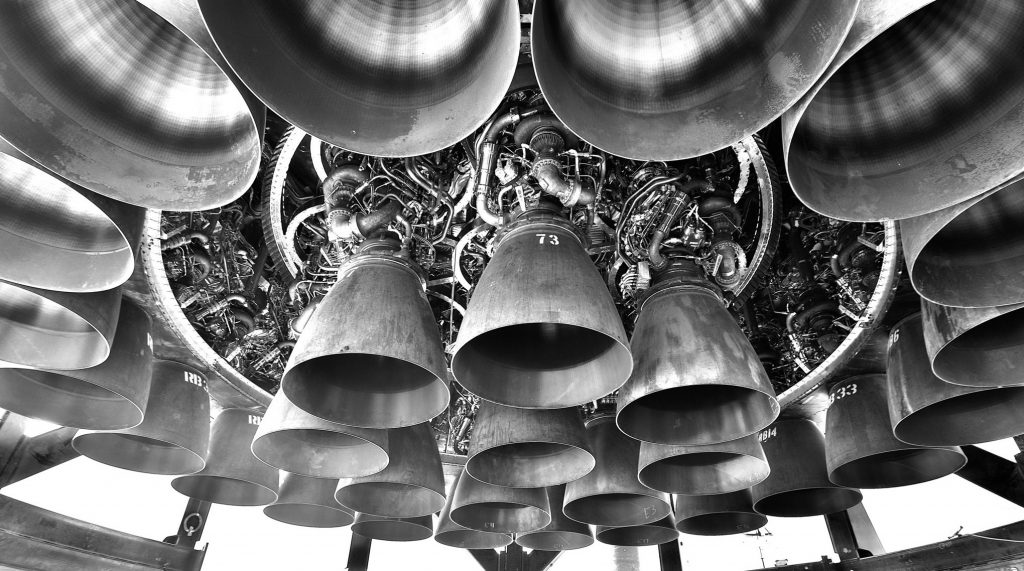
As of November 17th, SpaceX has reinstalled all 29 Raptor engines on Booster 4, partially finished the outer ring of Raptor heat shields, and set the stage for more heat shielding around its 9 center engines and the gap between those inner and outer Raptors. Shielding the Raptor Center engines in a way that still seals off Super Heavy’s aft will be even more challenging given that all nine need to be able to freely gimbal to vector their thrust, while the outer ring of 20 Raptor Boost (RB) engines are fixed in place. At pace of work established over the last few months, it will likely take SpaceX several more weeks to finish that heat shield and install seven ‘aerocovers’ over racks of sensitive equipment installed around Booster 4’s base.
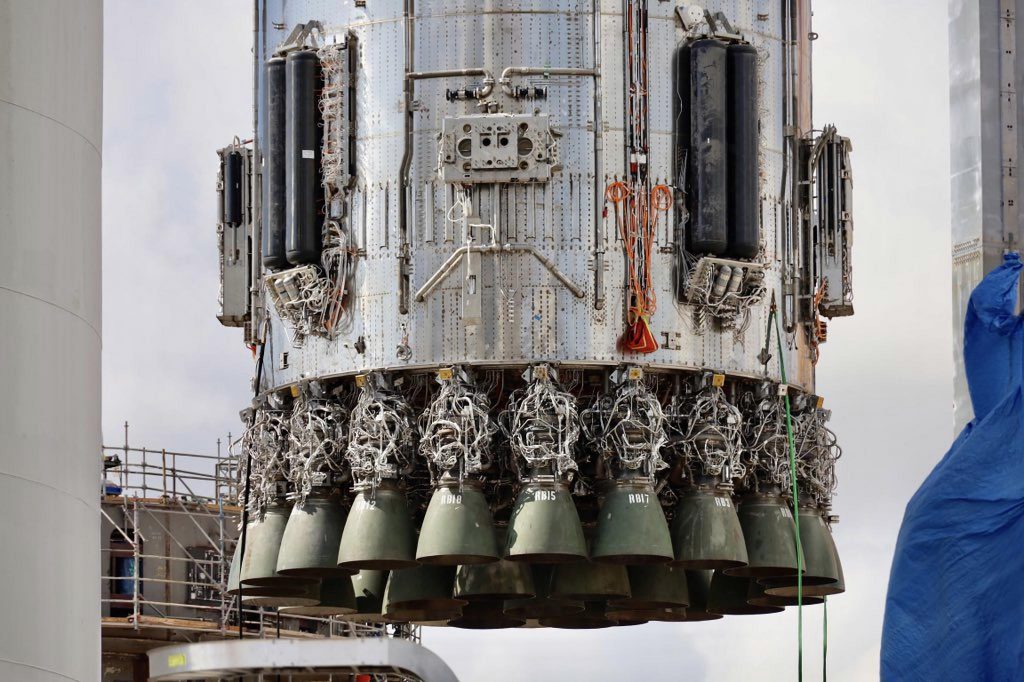
Super Heavy Booster 5, on the other hand, has taken a slightly different path through assembly. Unlike Booster 4, which first rolled out as little more than a giant steel tank with Raptors half-installed, SpaceX appears to have installed most of Booster 5’s external plumbing, wiring, equipment racks, and maybe even the start of its Raptor heat shield during assembly instead of after. Perhaps as a result, SpaceX has taken more than ten weeks to stack Booster 5 versus 2.5 weeks for Booster 4. But given that Booster 4 still doesn’t appear to be complete some 18 weeks after its assembly began, there’s a chance that Booster 5 will ultimately take 4-6 weeks less to reach initial test readiness.
If SpaceX does complete Super Heavy B5 well ahead of B4’s schedule, it will soon find itself with two test-ready Starship boosters but only one orbital-class stand with which to test them, potentially forcing the company to make some interesting decisions.

News
Tesla FSD fleet is nearing 7 billion total miles, including 2.5 billion city miles
As can be seen on Tesla’s official FSD webpage, vehicles equipped with the system have now navigated over 6.99 billion miles.

Tesla’s Full Self-Driving (Supervised) fleet is closing in on almost 7 billion total miles driven, as per data posted by the company on its official FSD webpage.
These figures hint at the massive scale of data fueling Tesla’s rapid FSD improvements, which have been quite notable as of late.
FSD mileage milestones
As can be seen on Tesla’s official FSD webpage, vehicles equipped with the system have now navigated over 6.99 billion miles. Tesla owner and avid FSD tester Whole Mars Catalog also shared a screenshot indicating that from the nearly 7 billion miles traveled by the FSD fleet, more than 2.5 billion miles were driven inside cities.
City miles are particularly valuable for complex urban scenarios like unprotected turns, pedestrian interactions, and traffic lights. This is also the difference-maker for FSD, as only complex solutions, such as Waymo’s self-driving taxis, operate similarly on inner-city streets. And even then, incidents such as the San Francisco blackouts have proven challenging for sensor-rich vehicles like Waymos.
Tesla’s data edge
Tesla has a number of advantages in the autonomous vehicle sector, one of which is the size of its fleet and the number of vehicles training FSD on real-world roads. Tesla’s nearly 7 billion FSD miles then allow the company to roll out updates that make its vehicles behave like they are being driven by experienced drivers, even if they are operating on their own.
So notable are Tesla’s improvements to FSD that NVIDIA Director of Robotics Jim Fan, after experiencing FSD v14, noted that the system is the first AI that passes what he described as a “Physical Turing Test.”
“Despite knowing exactly how robot learning works, I still find it magical watching the steering wheel turn by itself. First it feels surreal, next it becomes routine. Then, like the smartphone, taking it away actively hurts. This is how humanity gets rewired and glued to god-like technologies,” Fan wrote in a post on X.
News
Tesla starts showing how FSD will change lives in Europe
Local officials tested the system on narrow country roads and were impressed by FSD’s smooth, human-like driving, with some calling the service a game-changer for everyday life in areas that are far from urban centers.

Tesla has launched Europe’s first public shuttle service using Full Self-Driving (Supervised) in the rural Eifelkreis Bitburg-Prüm region of Germany, demonstrating how the technology can restore independence and mobility for people who struggle with limited transport options.
Local officials tested the system on narrow country roads and were impressed by FSD’s smooth, human-like driving, with some calling the service a game-changer for everyday life in areas that are far from urban centers.
Officials see real impact on rural residents
Arzfeld Mayor Johannes Kuhl and District Administrator Andreas Kruppert personally tested the Tesla shuttle service. This allowed them to see just how well FSD navigated winding lanes and rural roads confidently. Kruppert said, “Autonomous driving sounds like science fiction to many, but we simply see here that it works totally well in rural regions too.” Kuhl, for his part, also noted that FSD “feels like a very experienced driver.”
The pilot complements the area’s “Citizen Bus” program, which provides on-demand rides for elderly residents who can no longer drive themselves. Tesla Europe shared a video of a demonstration of the service, highlighting how FSD gives people their freedom back, even in places where public transport is not as prevalent.
What the Ministry for Economic Affairs and Transport says
Rhineland-Palatinate’s Minister Daniela Schmitt supported the project, praising the collaboration that made this “first of its kind in Europe” possible. As per the ministry, the rural rollout for the service shows FSD’s potential beyond major cities, and it delivers tangible benefits like grocery runs, doctor visits, and social connections for isolated residents.
“Reliable and flexible mobility is especially vital in rural areas. With the launch of a shuttle service using self-driving vehicles (FSD supervised) by Tesla in the Eifelkreis Bitburg-Prüm, an innovative pilot project is now getting underway that complements local community bus services. It is the first project of its kind in Europe.
“The result is a real gain for rural mobility: greater accessibility, more flexibility and tangible benefits for everyday life. A strong signal for innovation, cooperation and future-oriented mobility beyond urban centers,” the ministry wrote in a LinkedIn post.
News
Tesla China quietly posts Robotaxi-related job listing
Tesla China is currently seeking a Low Voltage Electrical Engineer to work on circuit board design for the company’s autonomous vehicles.

Tesla has posted a new job listing in Shanghai explicitly tied to its Robotaxi program, fueling speculation that the company is preparing to launch its dedicated autonomous ride-hailing service in China.
As noted in the listing, Tesla China is currently seeking a Low Voltage Electrical Engineer to work on circuit board design for the company’s autonomous vehicles.
Robotaxi-specific role
The listing, which was shared on social media platform X by industry watcher @tslaming, suggested that Tesla China is looking to fill the role urgently. The job listing itself specifically mentions that the person hired for the role will be working on the Low Voltage Hardware team, which would design the circuit boards that would serve as the nervous system of the Robotaxi.
Key tasks for the role, as indicated in the job listing, include collaboration with PCB layout, firmware, mechanical, program management, and validation teams, among other responsibilities. The role is based in Shanghai.
China Robotaxi launch
China represents a massive potential market for robotaxis, with its dense urban centers and supportive policies in select cities. Tesla has limited permission to roll out FSD in the country, though despite this, its vehicles have been hailed as among the best in the market when it comes to autonomous features. So far, at least, it appears that China supports Tesla’s FSD and Robotaxi rollout.
This was hinted at in November, when Tesla brought the Cybercab to the 8th China International Import Expo (CIIE) in Shanghai, marking the first time that the autonomous two-seater was brought to the Asia-Pacific region. The vehicle, despite not having a release date in China, received a significant amount of interest among the event’s attendees.








